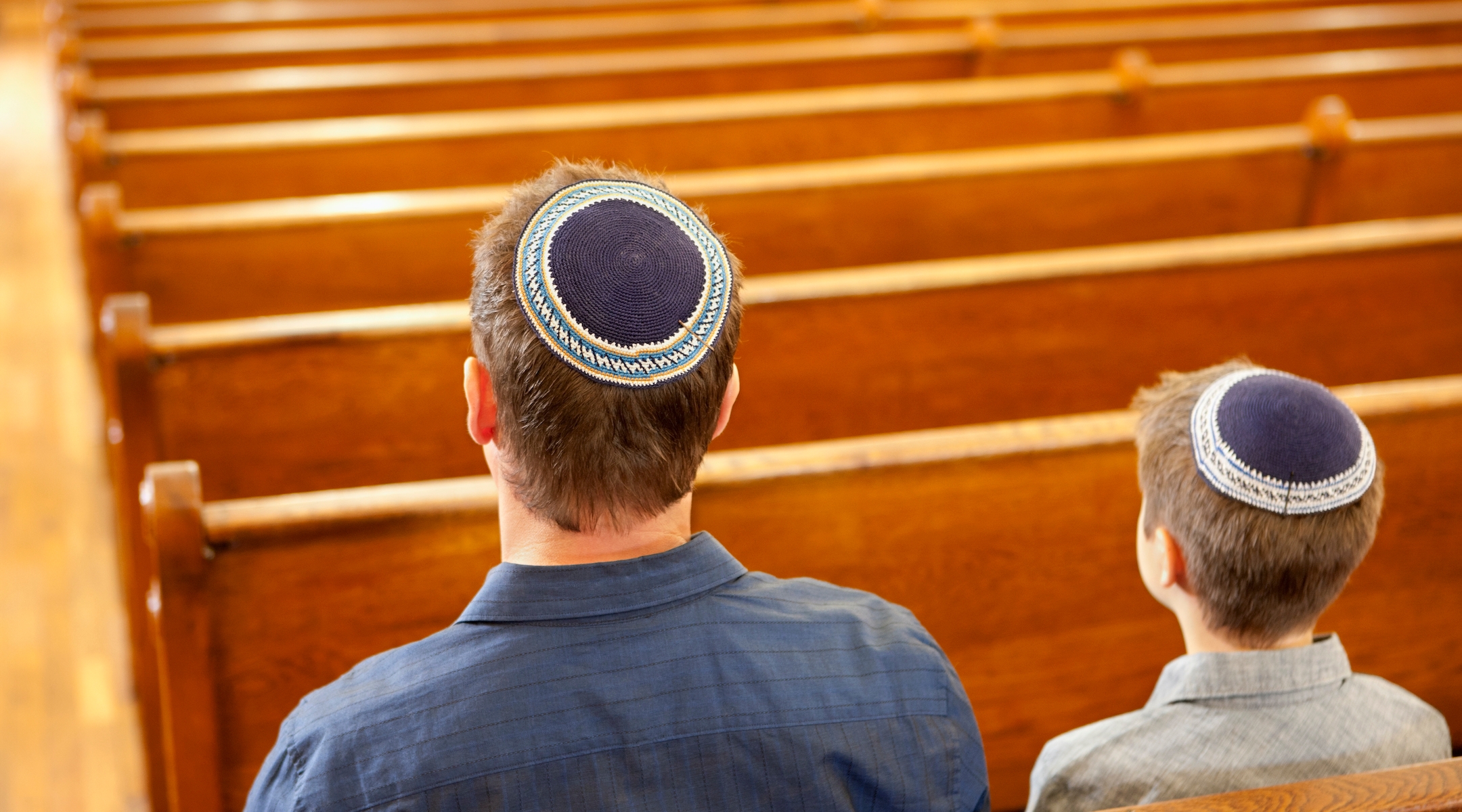Judaism’s Conservative movement was founded in Germany in 1845 by former Reform rabbis who felt that Reform had grown too liberal in its rejection of tradition.
But it took more than 140 years before the three major institutions of Conservative Judaism, whose 2 million members make it the largest branch of U.S. Judaism, issued the movement’s first common statement of principles.
The statement, released last week, finally attempts to answer where Conservatism stands on such issues as belief in God, the role of women in Judaism, religious pluralism, and, most importantly, the movement’s approach to halacha, or Jewish law.
But despite these answers, contained in a 57-page booklet called “Emet Ve-Emunah,” or Light and Belief, questions remain:
Can a movement that has long defined itself by what it is not — neither as liberal as Reform nor as unbending as Orthodox — create a defining ideology?
Can such a definition reconcile differences that have developed between the movement’s own “liberal” and “traditional” factions?
Will the statement achieve one of its goals, to reinvigorate a movement whose once extraordinary growth has levelled off over the last 20 years?
The leaders of the Jewish Theological Seminary, the Rabbinical Assembly and the United Synagogue of America, respectively the academic, clerical and congregational bodies of the movement, answer yes to all three questions.
In a joint statement, they called the document “a thorough exploration of the core of Conservative belief, allowing for diversity in thinking, but setting an even stronger guideline for the knowledge and observance” of halacha.
The chairman of the 35-member commission that prepared the document, Rabbi Robert Gordis, acknowledged during an interview that it was a challenge to create “a positive program for Conservative Jewry,” a movement that he said “is not growing.”
Attracting new adherents, said Gordis, means responding to the needs of lay people, who are seeking specific parameters of belief. “People today are looking for a point of view. They’re asking, ‘What is Conservative Judaism?’ ” said Gordis, a member of the JTS faculty for more than 30 years and a past president of the Rabbinical Assembly. “He finds out when he turns to this pamphlet.”
Concerning ideological differences within the movement, Gordis said the statement was devised “in a spirit of fellowship” rather than “a spirit of confrontation.” Gordis said he insisted on the appointment of a commission member who represented the “right wing” of the movement.
NOTHING NEW, SAYS CRITIC
But according to that member, Rabbi David Novack of New York, “I don’t think that it (the statement) is terribly successful. It doesn’t indicate anything people don’t know already.”
Novack is vice president of the Union for Traditional Conservative Judaism, which was founded in 1983 to counter a “liberal” trend in Conservatism that culminated in the decision to ordain women as rabbis. It claims a membership of 5,000 families and 500 rabbis.
Novack maintains that a gulf remains between traditional Conservatives such as those in the union and much of the Conservative mainstream. They agree on the fundamentals of Conservatism — respect and observance of the halacha along with a belief that it may be adapted to social and technological change.
“We’re not opposed to changes,” said Novack, “but they have to be justified according to the halacha.” By allowing women to serve as rabbis and permitting automobiles to be driven to the synagogue on Sabbath, said Novack by way of example, the Conservative mainstream is saying, “‘We follow halacha unless we don’t feel like it.’ ”
The statement of principles, said Novack, is a statement of unity only in that it includes both sides in key debates. The section on women rabbis, for example, “pays tribute” to the expanded role of women within Judaism, but acknowledges that their functioning as rabbis or cantors has not been unanimously accepted among Conservative leaders.
Said Novack, who expressed annoyance that he was unable to see a final version of the statement before it was presented this week, “I fail to see that it’s going to effect more unity.”
CODE OF ETHICS SOUGHT
The statement also has detractors within the “mainstream,” as Franklin Kreutzer of Miami, president of the United Synagogue of America, pointed out.
Calling the statement “an historic first step in the correct direction,” Kreutzer said nonetheless that “the laity would rather have had a comprehensive ideology rather than principles. The laity is looking for words that can be understood and used by practicing, committed Jews in everyday life.”
Kreutzer, an attorney, said the laity was not sufficiently represented on the commission and that the rabbis on the panel “really had a different view and different agenda of where it should go.”
Kreutzer said the laity desires an ideology that “clears up the areas of kashrut and Shabbat observance, the appropriate roles of women. They need to talk about morality and ethics in business life, personal life.”
He said the movement must take clear stands on those issues — even in the face of ideological divisions.
“I can’t believe that there can be more strain than we’ve already had,” he said. “We’ve crossed many difficult hurdles and the movement is still together.”
The statement contains no single, clear ideology, explained Rabbi Wolfe Kelman, executive vice president of the Rabbinical Assembly, because it emphasizes what he called the perennial hall-mark of Conservatism: “a uniformity of deed, but pluralism of ideology.”
The statement, said Kelman, “is not a catechism. There is no hierarchy that lays down what is permissible.”
The statement was expected to have its first test this week, when it formed the core of study sessions at the winter meeting of the Rabbinical Assembly in Kiamesha Lake, N.Y. Following the meeting, it will be distributed among the movement’s 850 synagogues. To receive a copy, send $4 to: United Synagogue Book Service, 155 Fifth Ave., New York, NY 10010.
The Archive of the Jewish Telegraphic Agency includes articles published from 1923 to 2008. Archive stories reflect the journalistic standards and practices of the time they were published.




